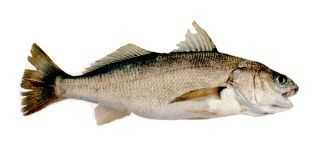California Kingcroaker

Species Details
Menticirrhus Undulatus
Sciaenidae
Perciformes
Inshore
6 - 8 lbs.
24" - 28"
California Kingcroaker (Menticirrhus undulatus) Fish Description
California Kingcroaker, also known as the California whiting, California corbina, and kingfish, is a marine demersal fish in the croaker family.
They have large, and long slender bodies, with flat bellies. The California Kingcroaker are grey, uniformly so, with some iridescence. They have a short and stiff chin barbel, which they use to detect prey. And they have a blunt snout that extends over their mouths. Their dorsal fin is long with a deep slit almost a-quarter way down. Their pectoral fin is large and fanning, whereas their tail fin is rather broom-like in shape.
Diet and Size
The diet of the California Kingcroaker predominantly consists of crustaceans, small fish, and other small invertebrates.
California Kingcroaker males mature at roughly at 2 years of age, and grow to the length of 10 in., their female counterparts would mature at the age of 3 and about 13 in. long.
The maximum recorded length and weight of the California Kingcroaker are 28 in. and 8.5 lbs.
Interesting Facts about California Kingcroaker
- California Kingcroakers have been observed to feed, in just a couple of inches of water in the upper surf, by scooping up mouthfuls of sand and separating the food by expelling the sand through the use of their gills and spitting out the bits of clamshells and other foreign matter.
- California Kingcroakers, much like the other members of their genus, lack a swim bladder, and therefore unable to produce a croaking sound. This reason being is believed by the loss of the swim bladder as part of an evolution to better facilitate inhabiting turbulent environments.
- The Yellowfin Croaker and this species are both the only two out of the eight coastal croakers in California waters to appear to have a single barbel on their lower jaw.
- Some people don't really aim to catch the California Kingcroaker but it does make its way on shrimp trawling vessels.
- California Kingcroaker population has been slowly declining since the year 2000s.
California Kingcroaker - Fishing Techniques
The California Kingcroaker is a common target by both commercial and sport fisheries, and they can be caught all-year-round. But it's best to be fishing for this species at its peak during the Summer and late Fall.
And as these fish often live inshore, they are frequently caught by the beaches, piers, and jetties, rather than private boats or fishing vessels. They are also known to be a by-catch by shrimp-trawling vessels.
Croakers are known to be taken by almost any bait, but the most preferable bait for these fellas would be a small strip or chunk of anchovy or mackerel. Or perhaps, even bloodworms or pile worms. The most common gear to use for these species is a high/low surf leader, rigged with 4 to 2 sized hooks. They would most often hit on the bait as it is descending once it has been cast or as soon as it hits the bottom. The technique here is to reel the line taunt, just right, as soon as the line has been cast to completion. You can feel the fish take the bait almost immediately.
Habitat and Distribution
California Kingcroakers can frequently be found in sandy beaches and shallow bay areas. They are often observed to travel in small groups in the surf zones, a few inches of water up to depths of 66ft. But Adult California Kingcroakers have been seen to travel solitarily as well.
They have been reported to be found in the waters such as the Gulf of California, Mexico until Point Concepcion, California. Though the IUCN remains skeptical to the extent to which the southern range of the California Kingcroaker is in actuality as similar species are inhabiting those areas and could have been misidentified.







